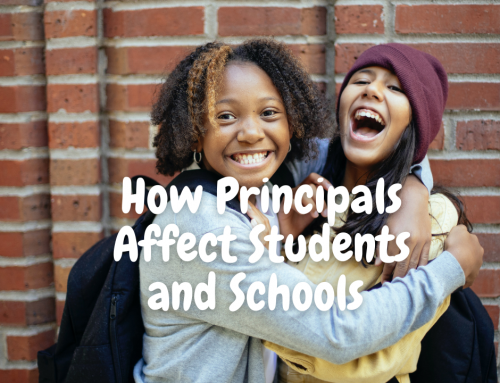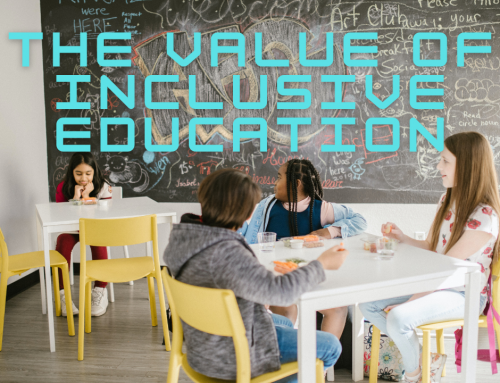Tired of using the same cooperative learning strategies over and over again? Ditch think-pair-share and jigsaw and try some of these fresh, meaningful group learning strategies.
Four Corners
- Students are given four choices. 2. Students record their answers. 3. The teacher designates one corner for each choice. 4. Students travel to the appropriate corner. 5. Students pair up and discuss answers.Check out these examples:
- Just for Fun: What is your favorite flavor of ice cream?
- Science: Provide students with four animals. They choose which one to represent then give 2 to 3 examples of the animal that they chose.
- Math: Provide students with four angles: Straight, obtuse, acute, or right. They think of a real world object that includes the angle.
- Language Arts: Students decide what season of the year they think is the best. Then support their opinion with details.
- Reading: Decide on four genres you want students to focus on. After students pick their genre, they are to write the title of 2-3 examples they think fit the genre. Discuss in corner.
- Social Studies: Give the name of four Native American Indian tribes. Students share what they wore, used as weapons, lived in, etc.
Cooperative graffiti
Another great brainstorming technique to try is cooperative graffiti. This strategy requires students to think about a topic and write down as many ideas as possible using different-colored pens. To start, divide students into small groups and give each group a large, butcher block piece of paper and a variety of colorful pens. Write down a broad topic on the front board, and on your command “Go!”, instruct students to write down as many ideas as they can that correlate with the topic you wrote on the board. Once the time is up (about 5-10 minutes), then have students try and organize their colorful ideas into categories.
Round table or rally table
These are simple cooperative learning structures that cover much content, build team spirit, and incorporate writing. The roundtable has three steps to it. In the first step, the teacher poses a question that has multiple answers. Step two, the first student in each group writes one response on a paper and passes the paper counterclockwise to the next student. Finally, in step three, teams with the greatest number of correct responses gain some type of recognition. This type of cooperative learning can easily be used in the science classroom. For example, the students may be asked to write as many reptile names as they can. At the end the group with the most reptiles written down is rewarded. (Example: A teacher displays a picture and asks what are various food chains found within the ecosystem of the picture. One student writes a food chain on a piece of paper then passes the paper to other members of the team for them to write a food chain that they see in the picture. Students continue to pass around the paper until the teacher stops the activity or until a group runs out of answers.)
Carousel
In this activity, students are broken into groups of 3-4 and the teacher places chart paper around the room with different questions on them, related to a certain topic. This lesson can be done before starting a new unit to activate prior knowledge, during the unit, or at the end of review. Each group starts at a different poster and is given a different color marker to write with. The marker travels with the groups around the rooms, and each group has 1-2 minutes to answer the question on the chart paper. They then rotate around the room to the next poster and repeat the process. You may want to try to get each group member to write their ideas down on the paper so that each student’s ideas are evident on the paper. When every group has written on each piece of paper, the class comes together for a whole class discussion and shares what is written on the posters.
Writearound
For creative writing or summarization, give a sentence starter (for example: If you give an elephant a cookie, he’s going to ask for…). Ask all students in each team to finish that sentence. Then, they pass their paper to the right, read the one they received, and add a sentence to that one. After a few rounds, four great stories or summaries emerge. Give children time to add a conclusion and/or edit their favorite one to share with the class. Cooperative learning strategies
Forced debate
This strategy requires students to use their communication skills to work within a group. Here’s how it works: The teacher writes a proposition on the front board, such as “Should there be a vending machine in the school cafeteria?” then the students who agree move to one side of the classroom and the students who disagree move to other side. Once students are on one side of the classroom, that is now their group. The teacher then forces them to debate the opposing side that they have chosen. This strategy really utilizes students’ critical thinking skills and forces them to really think about the question as a whole in order to argue for the opposing side rather than what they really feel about the question.
Snowball
Flip chart papers are posted around the room. Each page has a different question to respond to, sentence to complete or other prompt for input. Learners are divided into pairs or small groups (up to 6). Each pair or small group is given a marker. Each group is situated at a different flip chart page and asked to write their responses on the sheet in front of them. The facilitator calls “snowball” and each group rotates clockwise. They read what the previous group has written and add new ideas or different views. The process continues until each group has rotated to all pages. The facilitator leads a debriefing session. You may have each group summarize the page that they finish at and suggest possible implications, applications etc.
Cooperative Learning is beneficial to students. Students have a responsibility to the group and to themselves. It encourages positive student interactions. Students also gain practice using social and collaborative skills. At the end of each cooperative learning activity, conduct discussions with students. You might ask students to name one thing they learned, how they felt working in a group, or how they might improve their group work.






